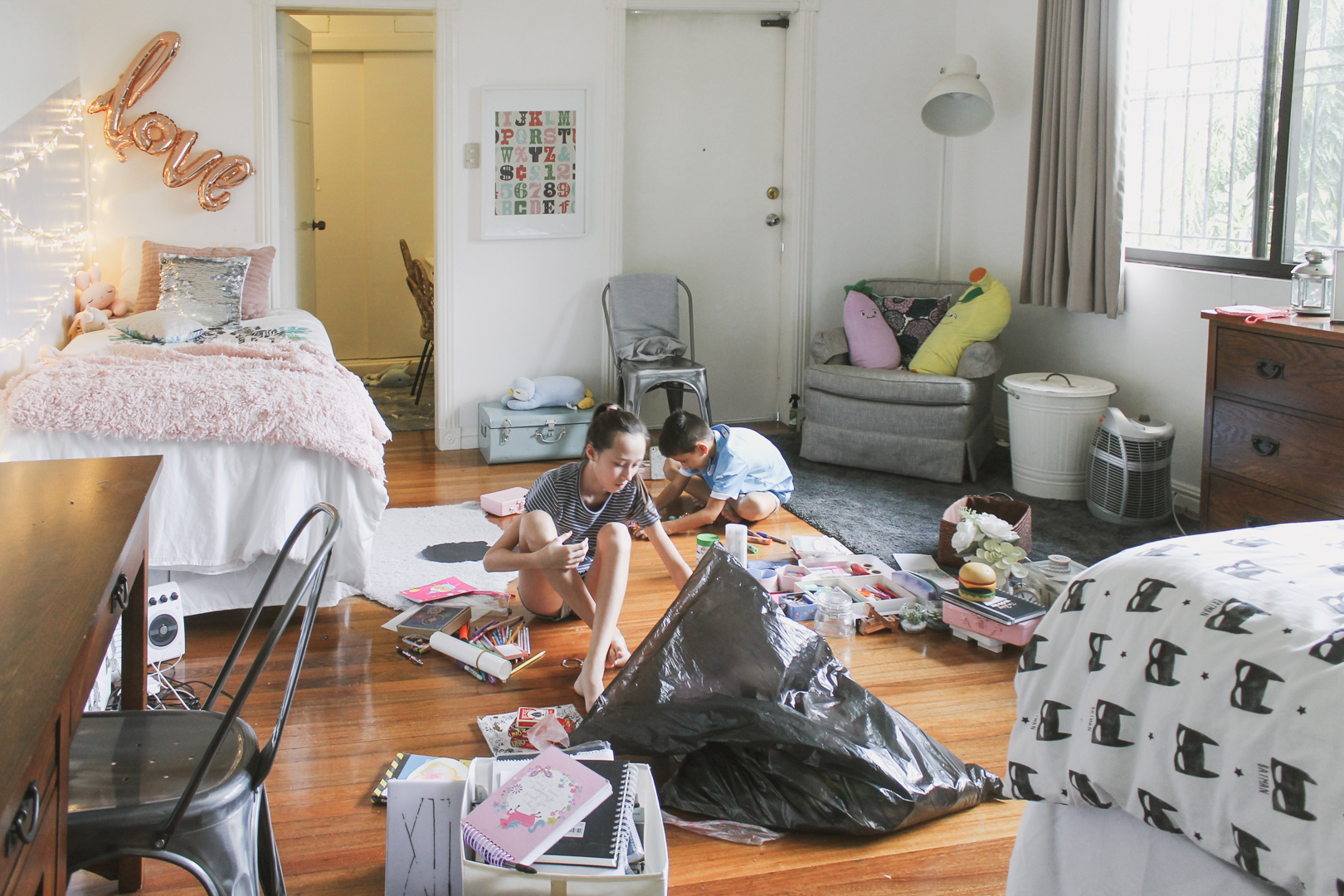
WHAT IS KOMONO?
Komono is a Japanese term for small things. The term includes a wide range of items such as knick-knacks, small decorative items, stationary goods, accessories, cosmetics, household products, and more. Basically, they tend to be the cause of clutter in your house.
The key for keeping a clutter-free home is to reduce the amount of your komono.
It is very easy to accumulate komono. If you’re not a type who routinely go through komono you don’t need or want, your house will be filled with clutter sooner or later. Thus, it’s important that you go through komono once in a while and only keep items that hold meaning to you. Then, if everything has a “home” to go back to as Marie Kondo suggests, you can keep your home tidy.
Here are the steps to take when you tidy up your child(ren)’s komono. I think it’s very important that you do this with your kids. I even tidied up my high school child’s room with her. She didn’t want my help at the beginning, but by the end, she thanked me for my help.
1. Get all the komono out in one place
If you’re going to work on komono, then take all the komonos out of drawers and boxes and lay them out on the floor. This is how Marie Kondo instructs us to do. I love this. It’s important that you follow this step. Why? Getting everything out is stressful, but it’s the most effective way to declutter. If you open a drawer and ask your child to pick out some items he/she no longer loves, you’ll see that it’s inefficient. Your child will have a hard time. It’s hard enough for adults to distinguish items they no longer want from those they want. Bringing all the komono items out allows you to see more clearly what you love and what you no longer need.
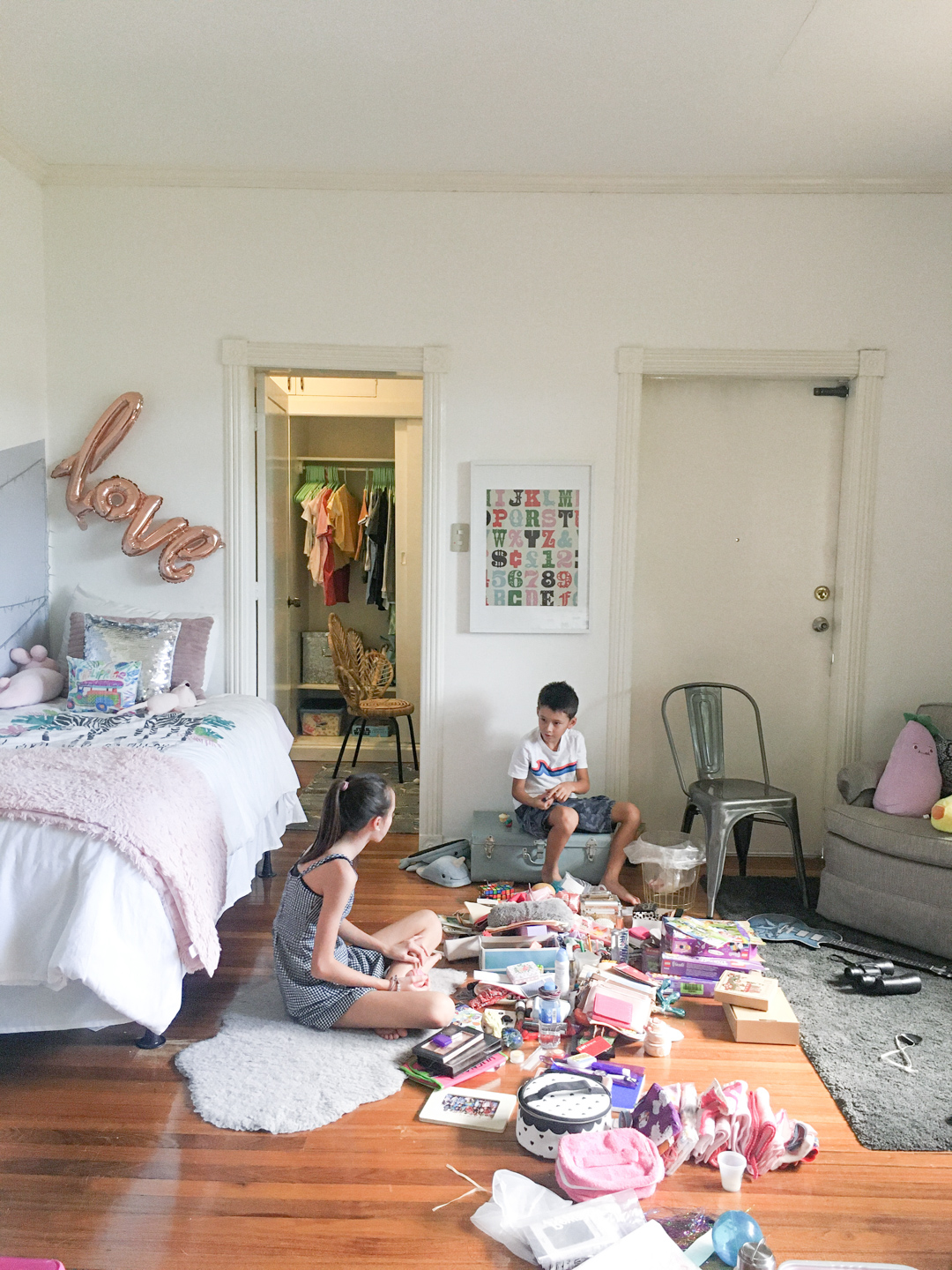
2. Go through each item with your child
Have your child hold each item in his/her hand and ask if he/she loves it or not. Marie Kondo uses the term “spark joy”. Each time your child holds an item, he/she needs to think if it sparks joy. With kids, though, it’s simpler to ask a question, “do you love this?”
I didn’t expect this, but my kids were quite pragmatic about determining whether they would like to keep items or not. There were a few times where I had to double check to make sure if certain items were really okay to go. It caught me by surprise. I wonder why adults have emotional attachment to little things and often times have more difficulty parting from them.
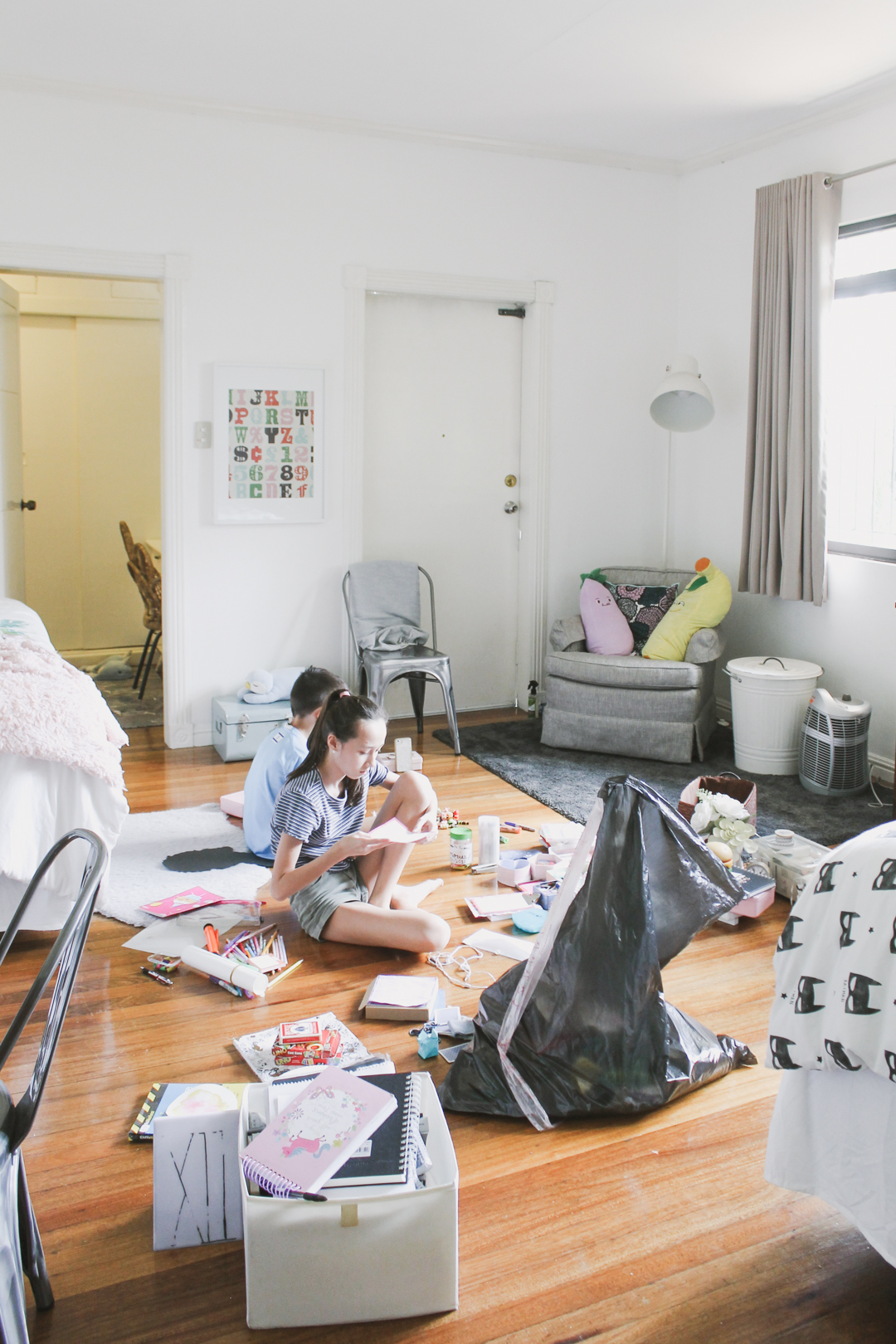
3. Have a big garbage bag ready
Since many komono items are not recyclable, sellable or suitable to give, many of them, unfortunately, will go to a garbage bag. Both of my daughters got rid of one large garbage bag full of komonos each. It felt liberating.
Many komono you own tend to be gifts from others. It’s hard to throw away gifts. One of the biggest take-away of learning KonMari method to me was what Marie Kondo said about gifts.
“The true purpose of a present is to be received.” She says, “Thank it for the joy it brought when you first received it – and bid it farewell.” There is no need for you to feel obligated to keep gifts. You can read more about “What to Do With Gifts That Don’t Spark Joy” here.
What I love about the Konmari method is that you just don’t throw stuff in the garbage bag or in a donation pile. You say thanks to each item for bringing joy into your life and then bid farewell. I personally feel so much better by doing this when I get rid of things.
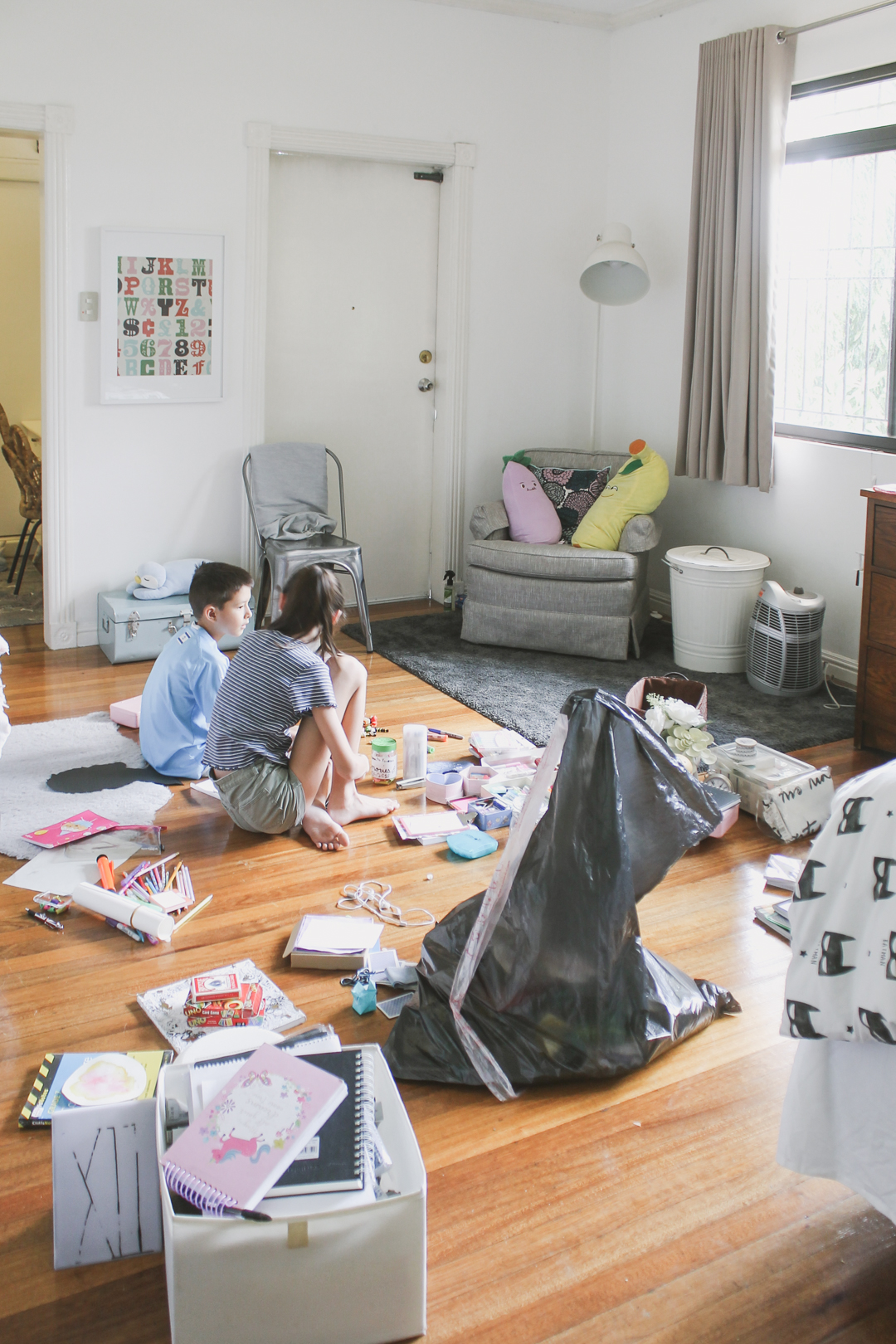
4. Do not give your unwanted items to others
I know that many people do this. It feels less guilty to give away than to throw away your unwanted items. “Maybe my younger sibling will use it.” “My child may be interested in this.” “I know that my colleague wants it.” Let’s not do that. If you’ve read Marie Kondo’s book, you know that you’re not supposed to give your unwanted items to others. The reason is that you end up passing your clutter and guilt to someone else. Then, the receiver has to deal with the clutter and guilt.
There are exceptions. Unopened or unused komono items can be donated or sold at a garage sale. If someone asks for your items, then you can give away, too. For example, my girls love their dad’s old graphic T-shirt hand-me-downs. They wear oversize T-shirts as nightgowns and look cute. My husband, therefore, asks my girls if they want any of his unwanted T-shirts.
My younger kids often want to pick out some goods from the the discard pile created by their older siblings. I let them do so. What usually happens, though, is that they pick up whatever they want, but then usually they leave them out again. It means that they didn’t care for them, either.
This below photo is a collection of once-loved items that needed new homes.
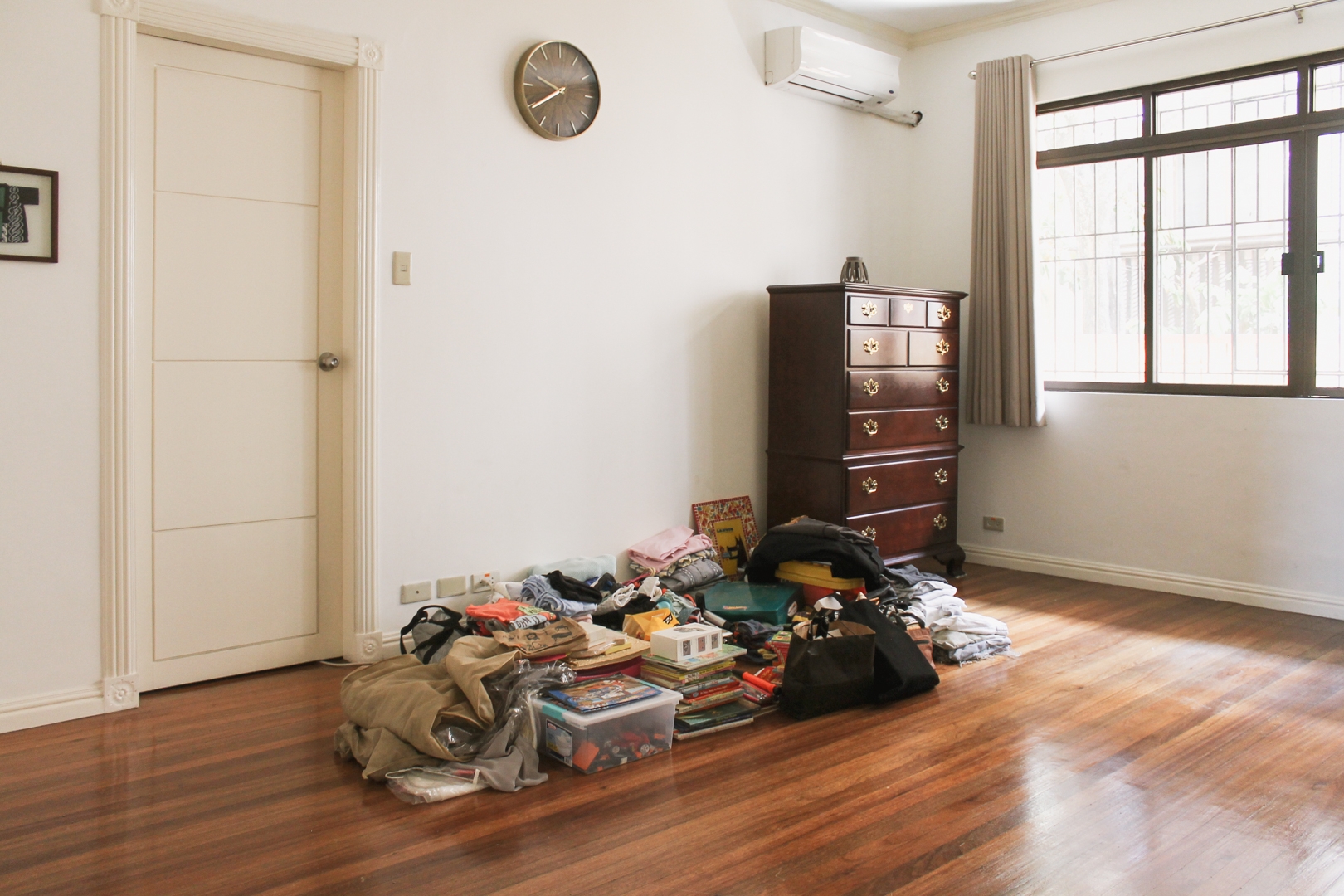
The end result was great. My kids room became so clean. My children loved it, too. They said they felt so much better after tidying up their rooms.
The key to tidy up children’s room is this.
REDUCE
I don’t think there is any other way. The more you have, the harder it is to tidy up.
Keep only items your kids really use and love. Others can find their new homes. Even if it means they move onto a waste bin.
It’s a good exercise for any children to think about what they own.
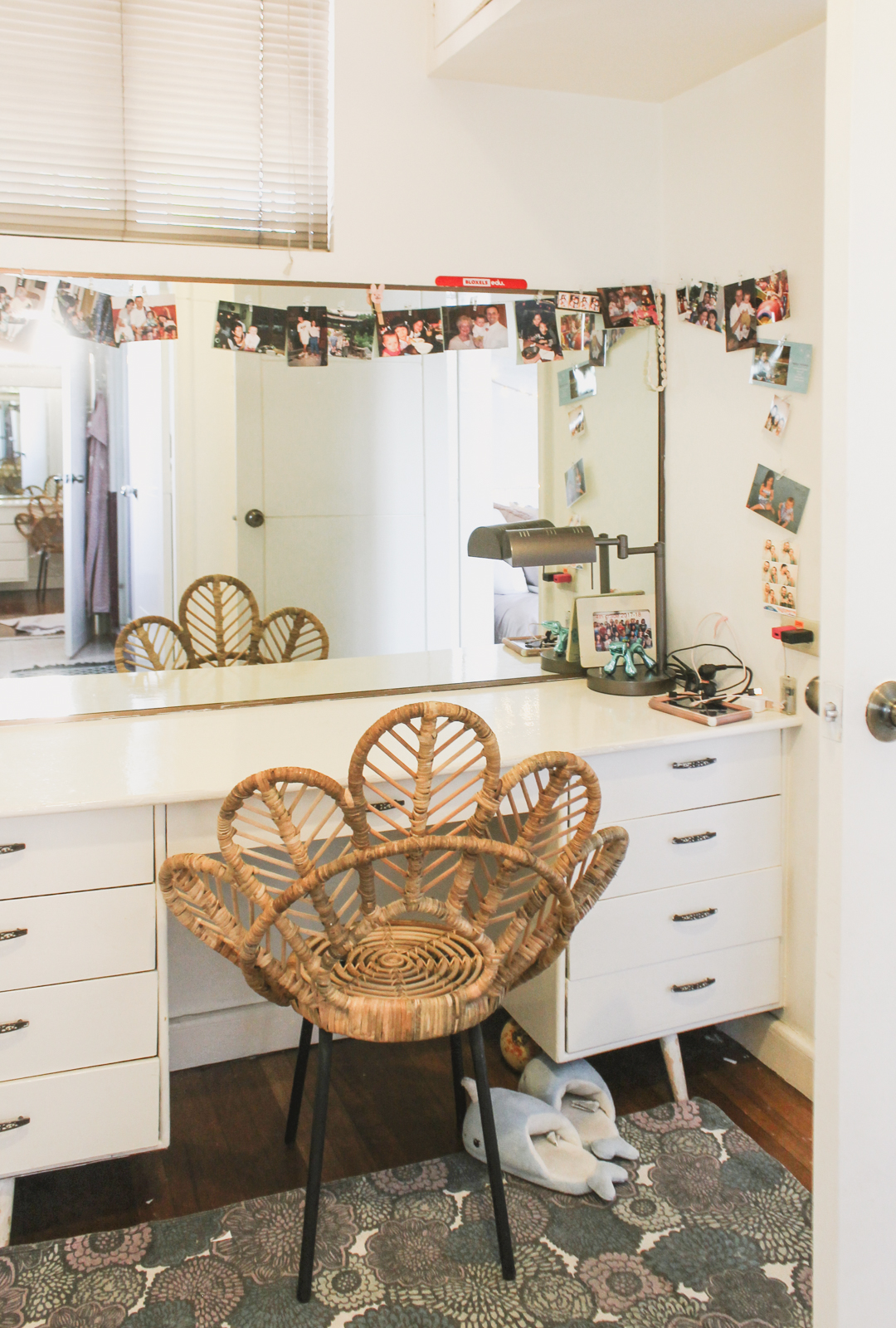
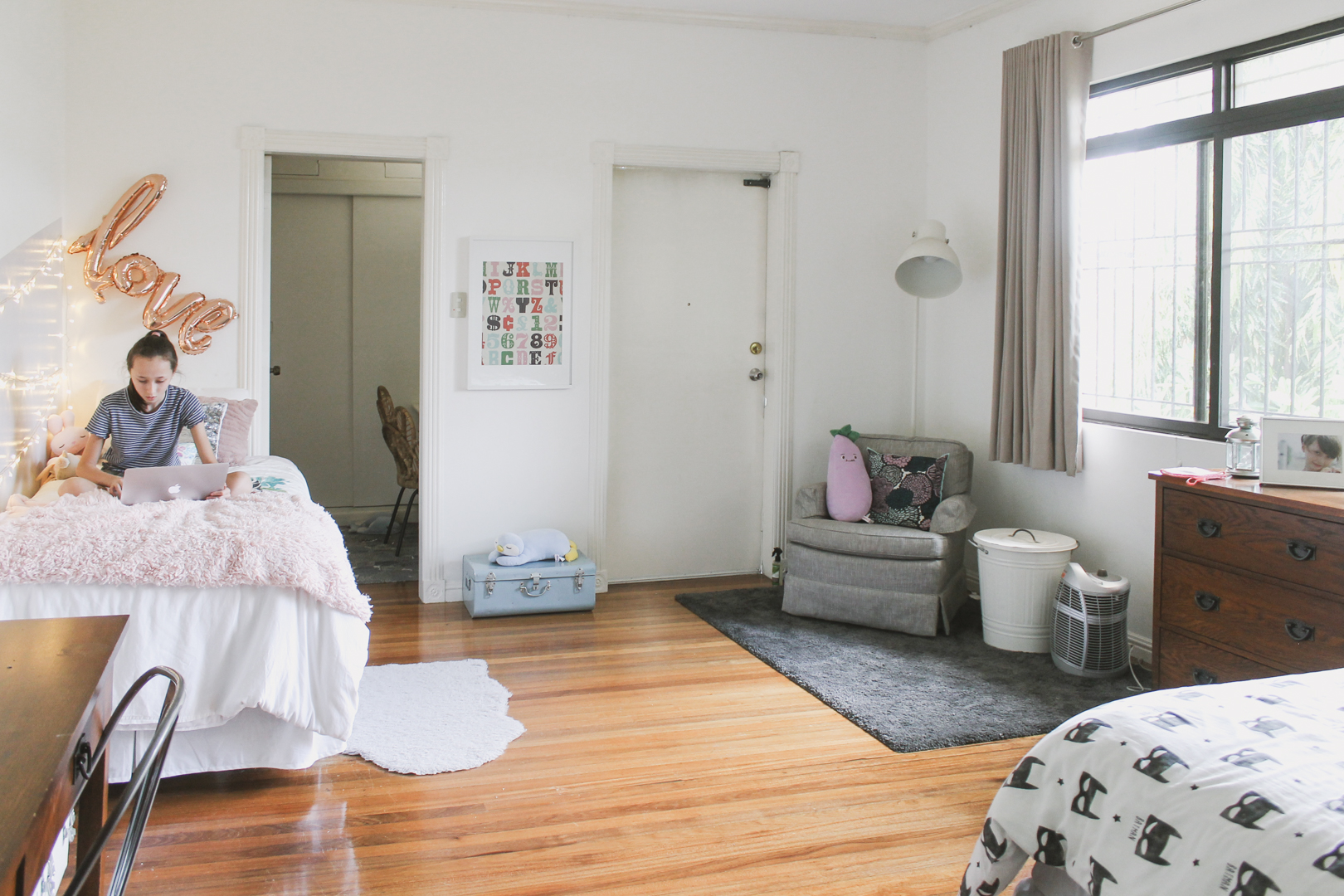
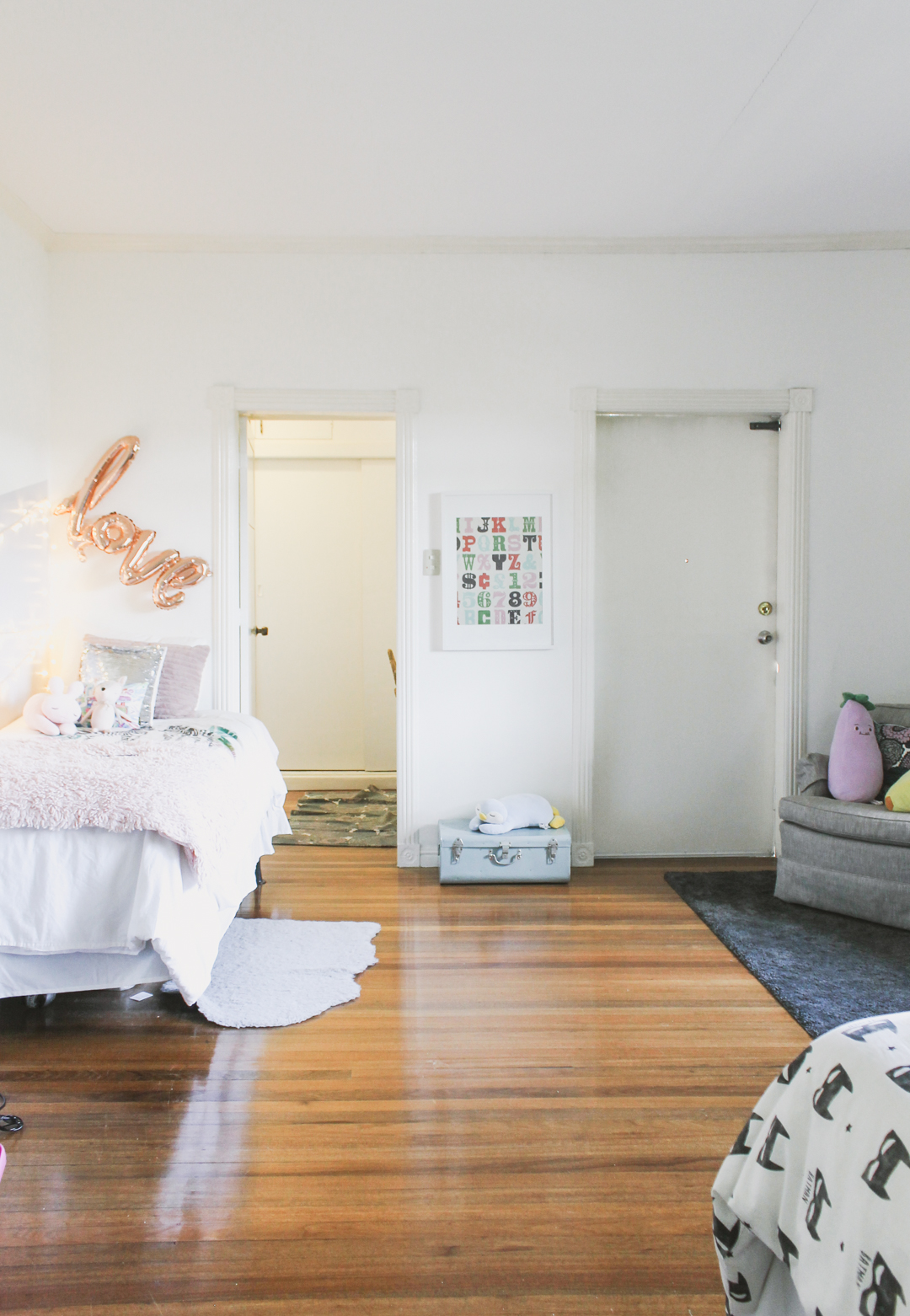
I’d like to leave you with this one video. This room transforms so much that it will inspire you. You could be next!
Leave a Reply